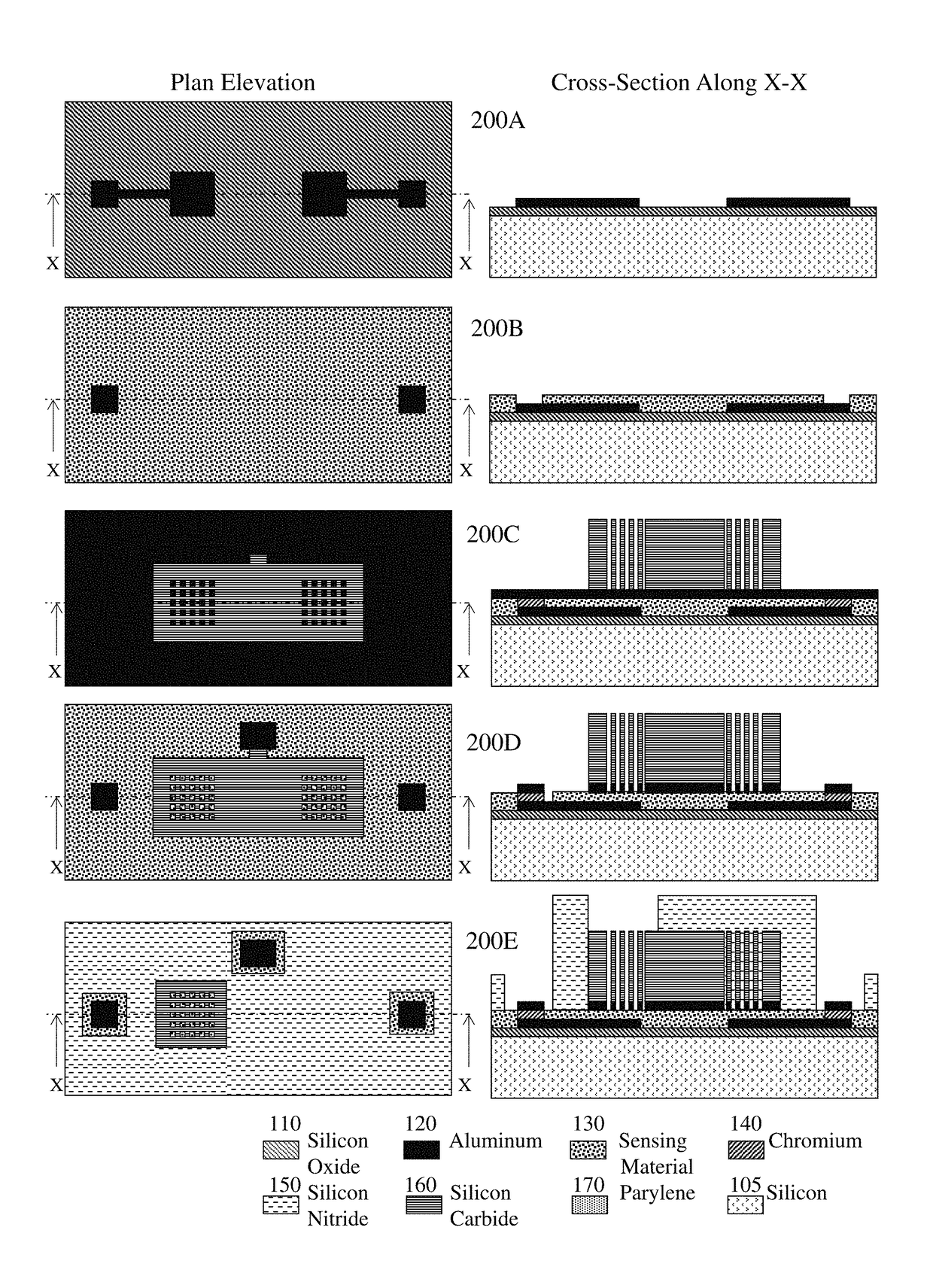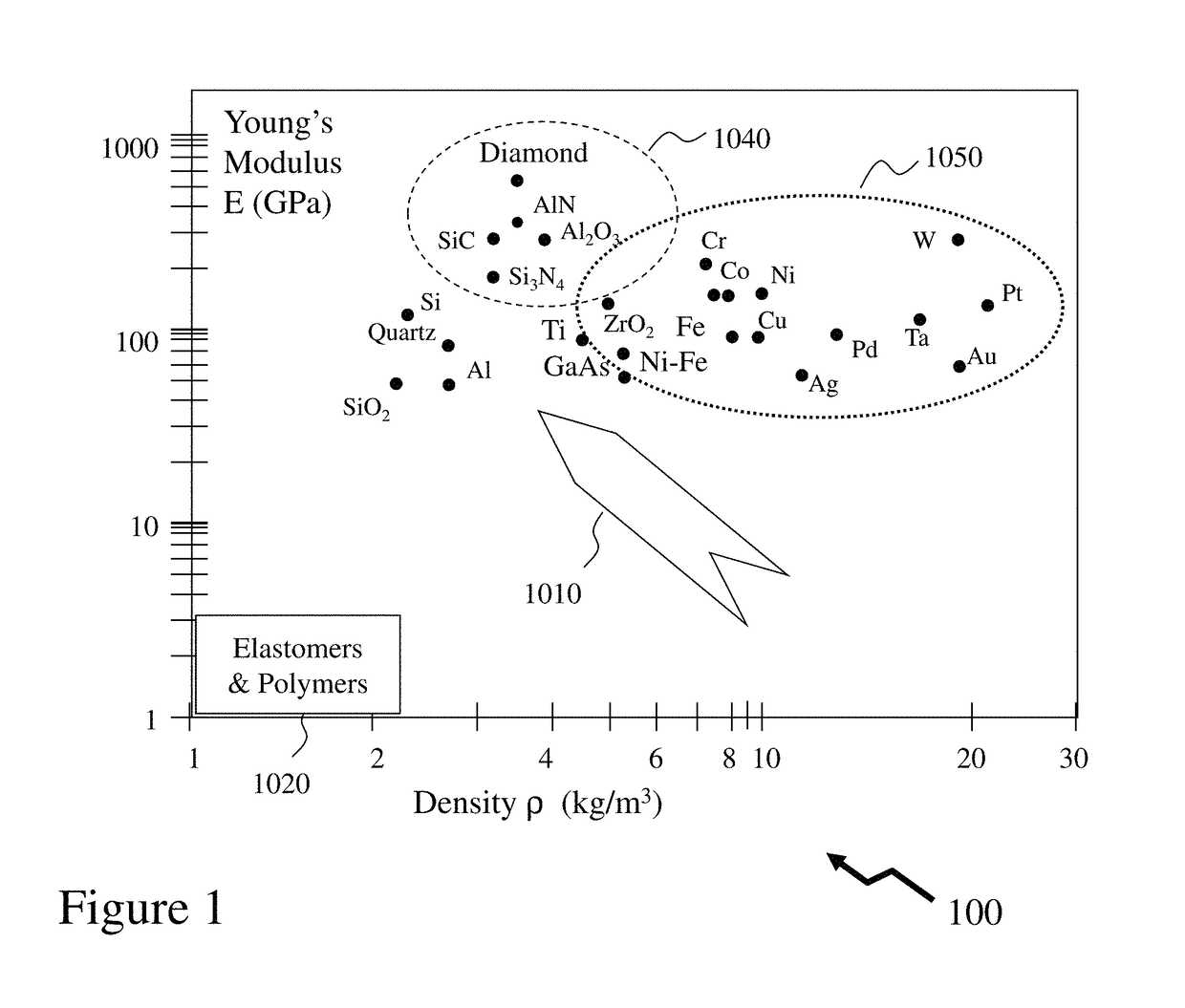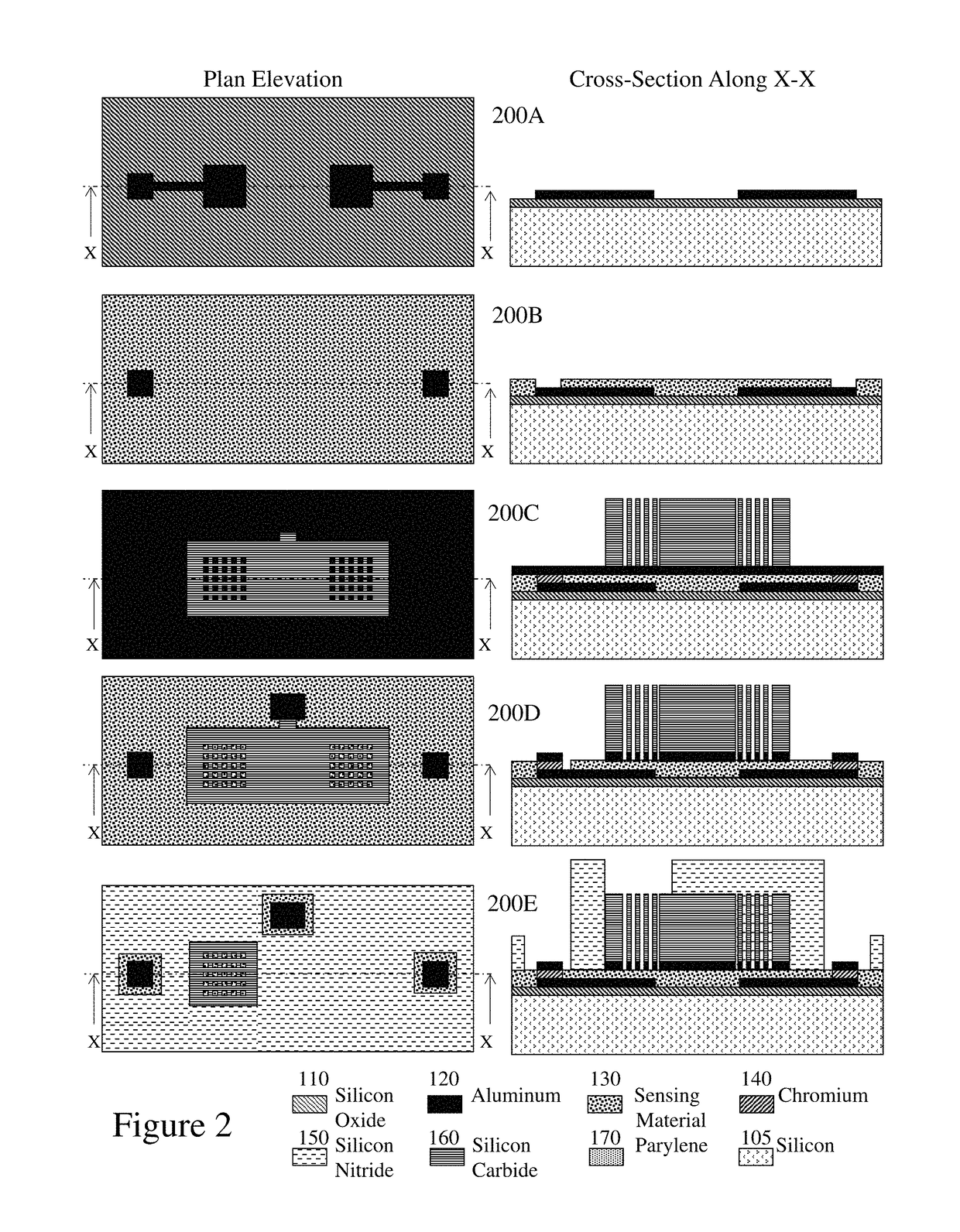Methods and systems for humidity and pressure sensor overlay integration with electronics
a humidity sensor and electronic technology, applied in the field of sensors, can solve the problems of difficult to gear toward general applications, and difficult to achieve the effect of general application of mems fabrication processes, and achieve the effect of reducing the cost of system footprint, reducing the cost of system components, and improving the performance of devices
- Summary
- Abstract
- Description
- Claims
- Application Information
AI Technical Summary
Benefits of technology
Problems solved by technology
Method used
Image
Examples
Embodiment Construction
[0040]The present invention is directed to humidity sensors and more particularly MEMS based capacitive sensors which may be manufactured directly over silicon based CMOS electronics.
[0041]The ensuing description provides exemplary embodiment(s) only, and is not intended to limit the scope, applicability or configuration of the disclosure. Rather, the ensuing description of the exemplary embodiment(s) will provide those skilled in the art with an enabling description for implementing an exemplary embodiment. It being understood that various changes may be made in the function and arrangement of elements without departing from the spirit and scope as set forth in the appended claims.
[0042]Referring to FIG. 1 shown is a material selection chart 100 for MEMS device implementations. Plotted onto the material selection chart 100 are a range of different materials including metals, dielectrics, ceramics and polymers wherein each material is represented by a point on the X-Y graph wherein ...
PUM
| Property | Measurement | Unit |
|---|---|---|
| temperatures | aaaaa | aaaaa |
| temperature | aaaaa | aaaaa |
| temperature | aaaaa | aaaaa |
Abstract
Description
Claims
Application Information
 Login to View More
Login to View More - R&D
- Intellectual Property
- Life Sciences
- Materials
- Tech Scout
- Unparalleled Data Quality
- Higher Quality Content
- 60% Fewer Hallucinations
Browse by: Latest US Patents, China's latest patents, Technical Efficacy Thesaurus, Application Domain, Technology Topic, Popular Technical Reports.
© 2025 PatSnap. All rights reserved.Legal|Privacy policy|Modern Slavery Act Transparency Statement|Sitemap|About US| Contact US: help@patsnap.com



